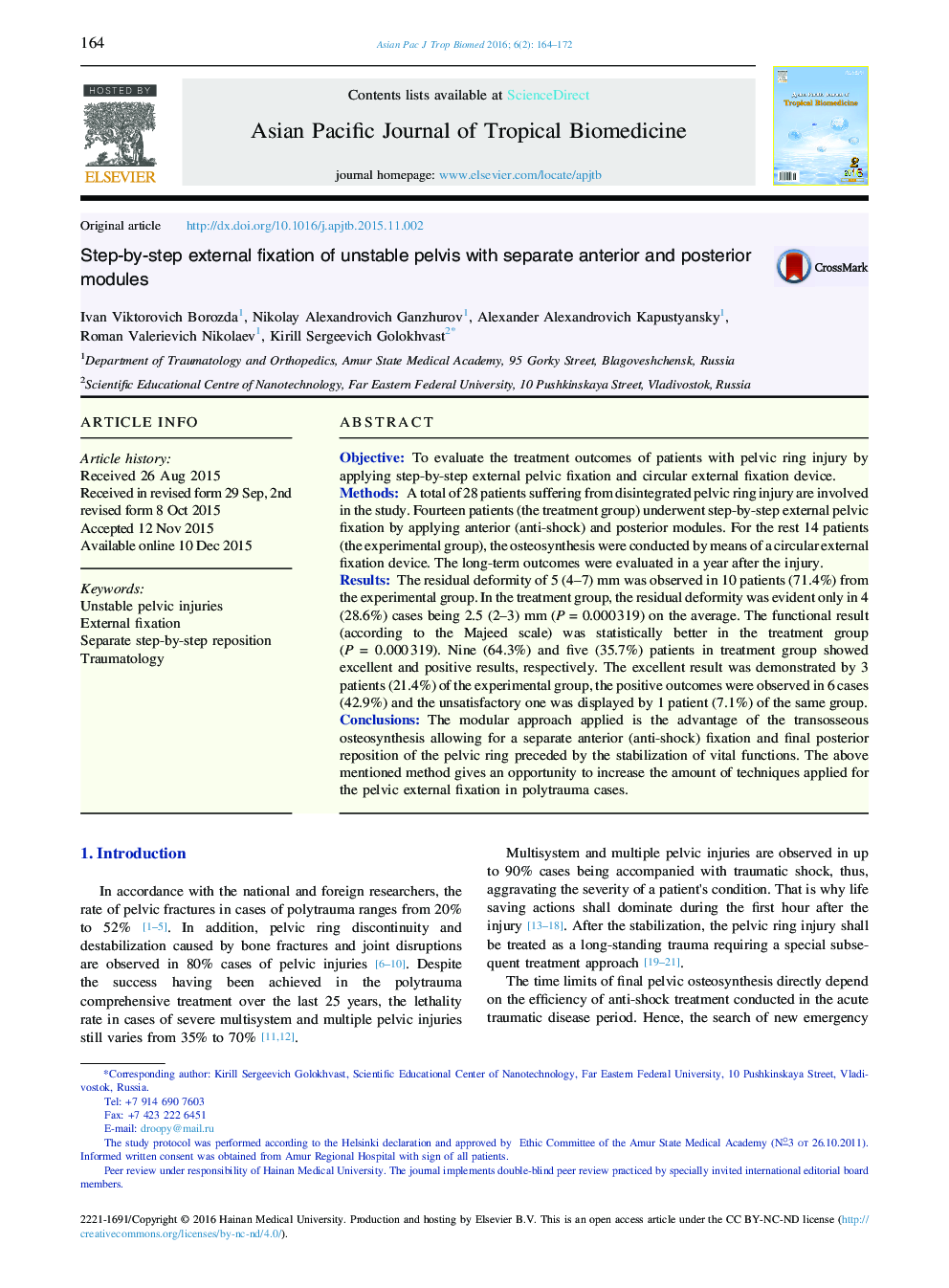| Article ID | Journal | Published Year | Pages | File Type |
|---|---|---|---|---|
| 2032357 | Asian Pacific Journal of Tropical Biomedicine | 2016 | 9 Pages |
ObjectiveTo evaluate the treatment outcomes of patients with pelvic ring injury by applying step-by-step external pelvic fixation and circular external fixation device.MethodsA total of 28 patients suffering from disintegrated pelvic ring injury are involved in the study. Fourteen patients (the treatment group) underwent step-by-step external pelvic fixation by applying anterior (anti-shock) and posterior modules. For the rest 14 patients (the experimental group), the osteosynthesis were conducted by means of a circular external fixation device. The long-term outcomes were evaluated in a year after the injury.ResultsThe residual deformity of 5 (4–7) mm was observed in 10 patients (71.4%) from the experimental group. In the treatment group, the residual deformity was evident only in 4 (28.6%) cases being 2.5 (2–3) mm (P = 0.000 319) on the average. The functional result (according to the Majeed scale) was statistically better in the treatment group (P = 0.000 319). Nine (64.3%) and five (35.7%) patients in treatment group showed excellent and positive results, respectively. The excellent result was demonstrated by 3 patients (21.4%) of the experimental group, the positive outcomes were observed in 6 cases (42.9%) and the unsatisfactory one was displayed by 1 patient (7.1%) of the same group.ConclusionsThe modular approach applied is the advantage of the transosseous osteosynthesis allowing for a separate anterior (anti-shock) fixation and final posterior reposition of the pelvic ring preceded by the stabilization of vital functions. The above mentioned method gives an opportunity to increase the amount of techniques applied for the pelvic external fixation in polytrauma cases.
